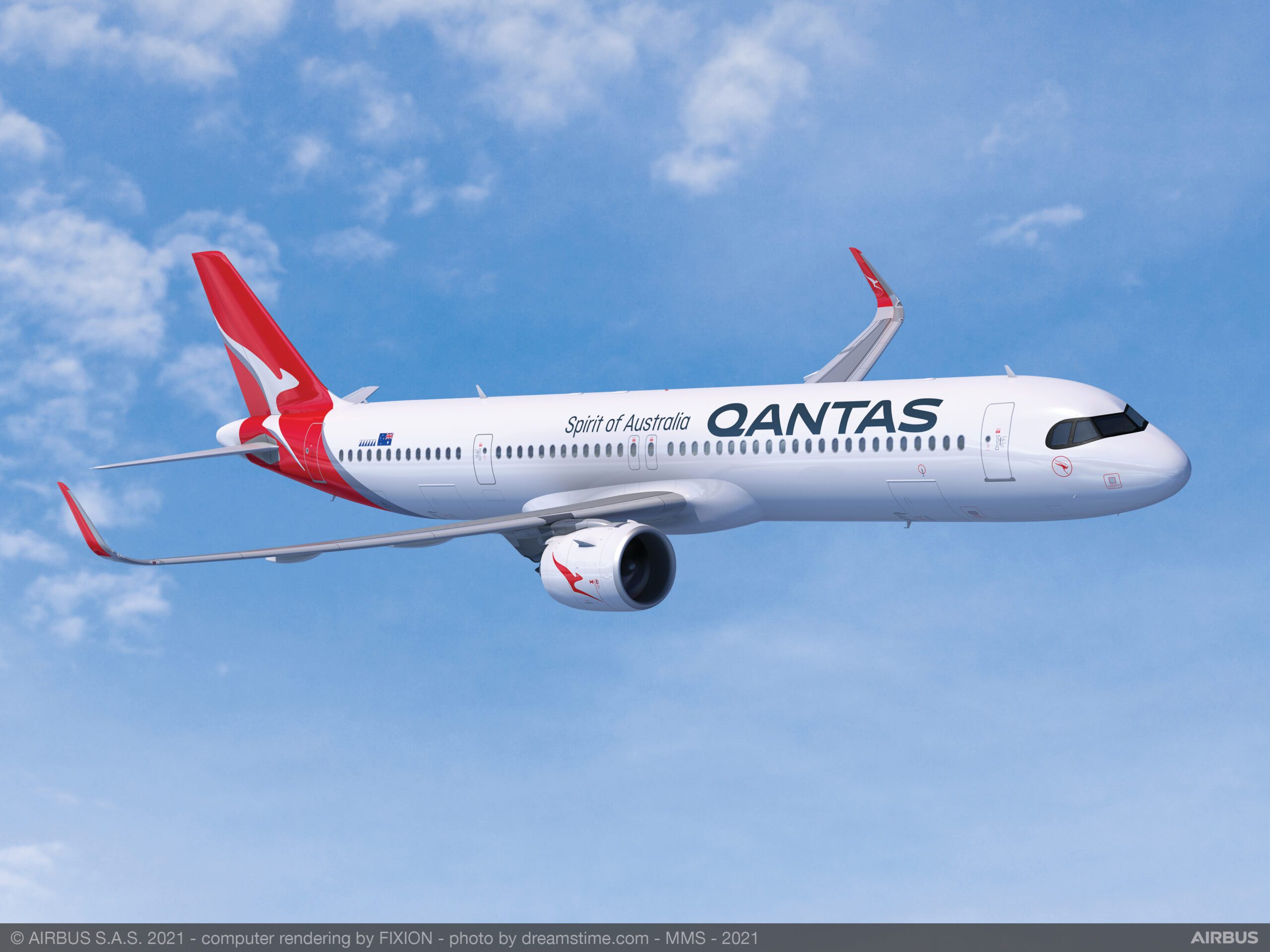
A321neoXLR PW QFA scaled
Qantas will renew its domestic fleet by ordering the Airbus A220 and A321XLR. The airline said on December 16 that it has made an in-principle agreement to place a firm order for twenty A220-300s and twenty A321XLRs plus purchase rights for another 94 aircraft. Qantas selects Airbus A220 and A321XLR over MAX and E2.
The order, which also includes the selection of the Pratt & Whitney Geared Turbofan, will be finalized by the end of FY22, which runs until September. This still makes the Farnborough Airshow an obvious occasion for signing the deal. The value of the order hasn’t been disclosed but Qantas confirms that it has received “a material discount from list prices.”
Since 2019, Qantas has had a thorough look at which aircraft type would suit its fleet renewal strategy for the next ten years best. The renewal plan for 75 Boeing 737-800s and 25 717s was called Project Winton lately, after the town where Qantas started operations in 1920. From the start, Airbus seemed to be ahead of Boeing as Qantas’ subsidiary Jetstar had already placed an order for 100 A320neo-family aircraft. In October, Qantas said it was closing in on a decision.
Airbus deal had an advantage
CEO Alan Joyce confirms the headstart of Airbus in a media statement: “The Airbus deal had the added advantage of providing ongoing flexibility within the order, meaning we can continue to choose between the entire A320neo and A220 families depending on our changing needs in the years ahead. The ability to combine the Jetstar and Qantas order for the A320 type was also a factor. The A320 will be new for Qantas Domestic, but we already know it’s a great aircraft because it’s been the backbone of Jetstar’s success for more than fifteen years and more recently operating the resources industry in Western Australia.”
The A321XLR allows the airline to open up new city pairs, although expect the type to operate predominantly between Melbourne, Sydney, and Brisbane. The Airbus can carry fifteen percent more passengers than the Boeing 737-800s that it will replace.
The firm order will be for twenty A220-300s, but Qantas has purchase rights for the smaller A220-100 too. (Qantas)
While the A220s on firm order are the larger -300, Qantas has purchase rights for the smaller -100. “The A220 is such a versatile aircraft which has become popular with airline customers in the United States and Europe because it has the capability to fly regional routes as well as longer sectors between capital cities. The combination of small, medium, and large jets and the different range and economics they each bring means we can have the right aircraft on the right route.”
Both aircraft types will have state-of-the-art cabins as the airline looks at some exciting plans for the next-generation cabins, says Joyce.
Disappointment for Boeing and Embraer
That Qantas selects the A220 and A321XLR over the MAX and E2 is a huge disappointment for both Boeing and Embraer. Qantas has a fleet of 75 Boeing 737-800s and has been a loyal Boeing customer for years. The US airframer pitched the different MAX versions. Embraer hoped to win a crucial big customer for the E190-E2 and E195-E2, which so far have failed to win orders in the Asia Pacific region.
On the selection and competition, Alan Joyce says: “Can I thank Airbus, Boeing, Embraer and the engine manufacturers for the efforts they put into this process. This was a very tough choice to make. Each option delivered on our core requirements around safety, capability, and emissions reductions. But when you multiply even small benefits in areas like range or cost across this many aircraft and over the 20 years they’ll be in the fleet, Airbus was the right choice as the preferred tenderer.”
Updated guidance for FY22
Qantas also provided a financial update for FY22. It expects a Group EBITDA of $-250 to -300 million in the first six months until April and an Underlying EBIT of at least $-1.1 billion, but a reduction of its net debt to $5.65 billion mainly due to proceeds of $802 million from selling land in Mascot. Liquidity should end at around $4.2 billion.
Qantas Domestic has seen strong (leisure) bookings for the Christmas and (Australian) summer holidays. It expects to operate at 75 percent capacity at the end of December and even 100 percent in February.
Qantas International resumed services in November to London, Los Angeles, Singapore, and last week to Delhi. The Omicron variant has had an adverse effect on bookings, with an impact on capacity growth of some ten percent. Total capacity in the second half of 2022 will end up at the lower end of the 40-55 percent range of pre-Covid levels offered earlier or on average 20-30 percent for FY22.
Yet, the carrier continues to expand its international network and announced earlier this week that it will resume services to Italy next June for the first time in eighteen years. It will run a three-weekly service between Sydney, Perth, and Rome.
Views: 9




